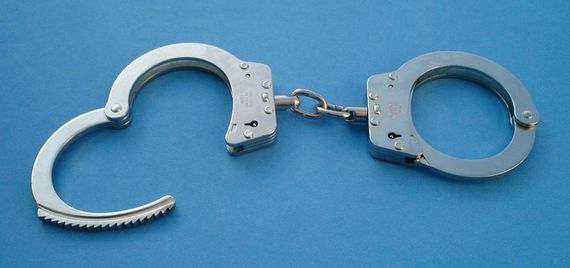How are amputees handcuffed?: originally appeared on Quora: The best answer to any question. Ask a question, get a great answer. Learn from experts and access insider knowledge. You can follow Quora on Twitter, Facebook, and Google+.
Answer by Justin Freeman, Former Patrol Officer
This is always a tricky situation, and just something you have to work out with both pragmatism and diplomacy.
If they have only one hand, it might be handcuffed to their belt or a belt loop in their pants, if it's sturdy enough to withstand that much stress. If this wasn't an option because the cuffs couldn't reach a suitable anchor, flex cuffs might be daisy chained together to get to such a point. Failing all that, you'd just have to search the arrestee very thoroughly and put them in the transport area unrestrained.
You can't cuff someone to something in the car - having an amputee burn to death in a patrol car accident because his one existing hand was chained to the cabin is the stuff riots are made of. In fact, it was department policy that, in the absence of a truly exigent circumstance (for instance, having to secure first suspect to prevent the escape of another armed, violent suspect), subjects were never to be handcuffed or otherwise secured to immobile objects. If an officer were to do so and were then drawn away from the scene or incapacitated, you're obviously introducing all manner of liability. Depending on who they are, the dynamic might parallel that of the chained goat in Jurassic Park.
In the case of someone with no arms/hands, there really aren't any restraint options. If they're thrashing around and intent on injuring themselves or something, you're going to have to get creative with transport - that might be a forced committal involving ambulance transport. Otherwise, if they're just a rote arrest to be transported by patrol car, you're not going to be doing anything here.
Policy for transport was to handcuff behind the back, but there were always exceptions. Pregnant arrestees or those with genuine limitations to their range of rotator cuff motion could be handcuffed in front, which is usually undesirable as an officer, as cuffing in front still allows for pocket access and easy hand-eye coordination. Other things might change this equation, as well; for instance, I once had an elderly male (86, I think) whom I was forced to arrest during a shoplifting call because of two outstanding warrants. It was a heartbreaking case, really - I later pieced together that his care aide had already embezzled tens of thousands of dollars from him, and was then putting him up to shoplifting, as most stores would release him without police involvement if they caught him. I didn't cuff him, as it would have only needlessly panicked him; simple documentation in the report was more than sufficient to get around the policy requirement there. Similar work would address many amputee issues.
Thus, officers try to be sensitive to the concerns presented by their condition, but at the same time must make sure that they, the suspect, and any others involved remain safe for the duration of the incident.


